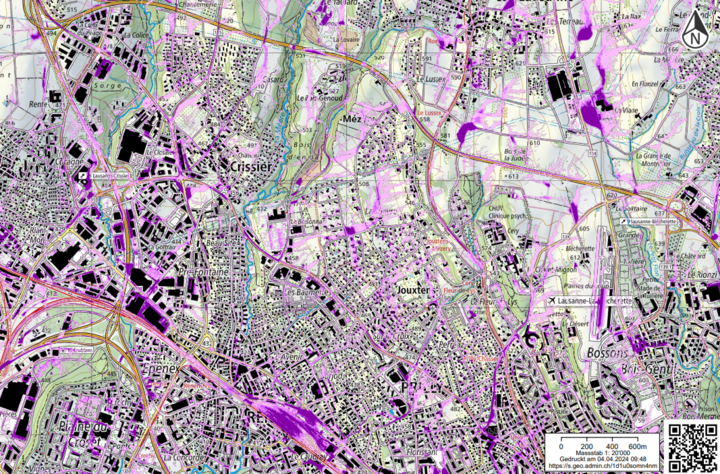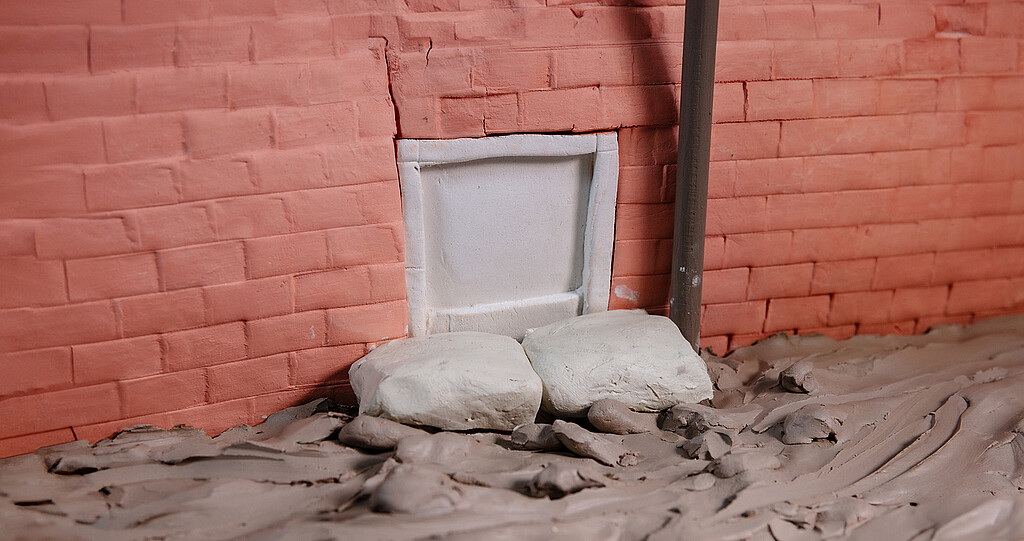The flow rate of surface water and the possible effects are often underestimated. A few centimetres of water at a critical point is enough to flood deeper rooms such as an underground car park or a cellar several metres high. Drainage plans are often not designed for such events. In Switzerland, around two thirds of buildings are potentially affected by surface runoff.
In recent years, there has been an increase in property damage caused by surface runoff. With the warmer climate, we can expect heavier and more frequent rainfall and consequently an increase in surface runoff. Flooding can also occur in areas that are not at risk of flooding from rivers and lakes.
Hazard maps
Hazard maps

As an important first step, the federal government, together with the Association of Cantonal Building Insurers and the Swiss Insurance Association, has drawn up a nationwide hazard map in recent years. These maps show which areas are affected, where surface water can run off and how high the water can rise. The new maps are useful for specialists such as architects, building owners, planners and authorities, but also for intervention forces such as the fire brigade. They can quickly gain an overview of potential hazards and take suitable protective measures at an early stage.
Effective measures
Effective measures
Surface runoff can be largely prevented through prevention. Prevention also partially counteracts the heat island effect in cities. The cantons and municipalities are called upon to take spatial planning, technical and biological measures, but also homeowners by protecting their properties. Examples of measures include
Spatial planning measures
- Adapt utilisation planning and building permit procedures to hazardous situations
- Plan and construct a sponge city: Store rainwater in cisterns, rainwater ponds, on flat roofs or car parks instead of discharging it directly via the sewer system
- Unseal areas and keep them free
- Dimension urban drainage systems for higher capacities
- Identify and maintain drainage corridors
Technical measures
- Protect new and existing buildings with conceptual and structural measures directly on the property
- Create drainage corridors for rain events where the capacity of the sewerage system is insufficient
- Build larger rainwater overflow basins for the sewerage system
- Promote water retention on flat roofs and open areas
Rainwater is a resource for Geneva
The canton of Geneva is changing its practice in dealing with rainwater: under the title ‘Water in the city’, rainwater is no longer regarded as waste but as a resource since 2020. The ‘sponge city’ concept is being implemented in the Grosselin neighbourhood in Carouge. Between 2022 and 2023, the canton also organised a large-scale exchange of experience.





